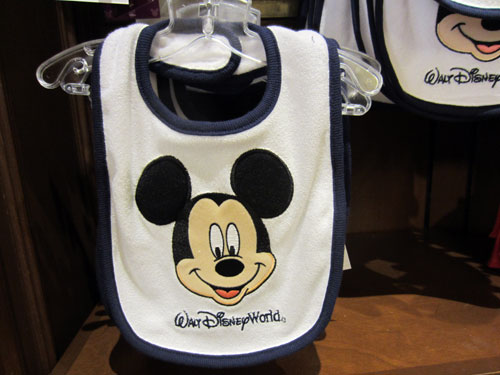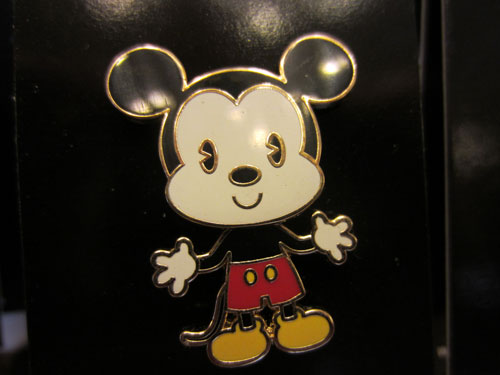As an adult and an avid Disney fan, I can’t imagine waiting a few years between visits to Disney World. I’m also a new mom. My baby is only a few months old, and I’ve already started planning his first Disney World vacation. But how long will it be before I can take him?
I’ve come across some pretty good information in my research, and I’ve realized that I’m not the only person with this dilemma. Here are some things you should consider before planning your child’s first Disney World Vacation.
1. Age
As I’ve started planning, I’m trying to decide how old he should be when we go to the most magical place on earth for the first time. Some people say he should be old enough to remember the vacation, and others note that ticket prices differ for younger children.
Children aged 10 and over pay the adult price, while ages 3 to 9 get a discount. Children under 3 years old are free!
If you think this will be your child’s only visit to Disney World, it’s probably best to wait until the child is older. In this case, I would suggest trying to go towards the end of the child’s 9th year so you can still get the discount. At this age, your child is old enough to appreciate the sophistication of Disney but still believe in the magic.
If you plan to take your child to Disney World more than once, it might be best to go the first time before age 3. They will get in for free (saving you some valuable money), they’ll love the Disney magic, and they can ride some of the very basic rides like Dumbo the Flying Elephant and It’s a Small World. However, you should know that they probably won’t remember the vacation at this age.

On the other hand, older children will also have more physical stamina. Since a Disney vacation is walking-intensive (some say 10 or more miles per day), the more a child can walk, the better. However, don’t hesitate to use a stroller if they need it. It will not only benefit them with a place to take a load off and even nap, but it’s also a great place to stash your stuff rather than carrying it. When little legs get tired, they start slowing down; a stroller allows you to move faster when it’s necessary!
2. Height
Besides age, height is an equally important numerical factor to consider.
Most attractions in Disney World have height requirements based on the ride’s speed, vehicle restraints, and seat height.
Since the tallest requirement is 48″, I would suggest waiting until your child is at least this height if this will be his or her only childhood visit. However, if you think you’ll be visiting again, you can consider different height requirements, which are listed below:
- Kali River Rapids 38″
- Seven Dwarfs Mine Train 38″
- Big Thunder Mountain 40″
- Dinosaur 40″
- Soarin‘ 40″
- Splash Mountain 40″
- Star Tours 40″
- Test Track 40″
- Tower of Terror 40″
- Expedition Everest 44″
- Mission: Space 44″
- Space Mountain 44″
- Primeval Whirl 48″
- Rock n’ Rollercoaster 48″
As you can see, only two of the most popular rides require your child to be over 44″ tall. Especially if your child isn’t a thrill seeker, 44″ may be an appropriate height to plan a first visit.
If you plan on visiting with a very young child, there are several rides that don’t have a height requirement including the Astro Orbiter, Buzz Lightyear’s Space Ranger Spin, Haunted Mansion, Jungle Cruise, Peter Pan’s Flight, and Spaceship Earth to name a few.
3. Flights
If you plan to fly, you should check with the airline to see if they have any requirements for young flyers. Most airlines will allow a baby just two days old to fly while some require the baby to be two months.
Though you may be permitted to fly with a child this young, it’s not always a smart idea. An infant’s immune system does not mature for quite sometime, and the recirculated air may be too dangerous. If someone on the plane has a cold, those germs can easily circulate through the cabin and infect your child. Most babies’ immune systems are no match for these germs. It’s best to wait until the child is at least six months old so they can build up immunity strong enough to fight these germs.

Then you have to consider the seating arrangement. Although you’re allowed to hold your baby during the flight, it is safer to purchase them a seat and restrain them in a proper safety harness. Most car seats fit the bill, and yours will say in the warning stickers whether it meets the requirements of flying. You should let your airline know that the seat is for a baby, and they’ll usually give you a discount as much as 50%!
4. Emotional Development
As I mentioned above, physical development is definitely something you should consider before you make the trek to Disney World, but emotional and mental development is another important factor. Not all children’s brains develop at the same rate, so you’ll have to consider where your child is on the scale.
If he or she is afraid of Santa or the Easter Bunny at the local mall, there’s a good chance that the characters at Disney will scare them as well. With careful planning and an eagle eye, you may be able to dodge them, but it may not be worth the effort.
What’s more, some of the dark rides can be scary if your child is afraid of the dark. Many of these rides are also loud, and noises can scare even older kids.
5. Schedule
If you do decide to visit with a young child, you should try to keep their schedule similar to what they experience at home to avoid meltdowns and exhaustion. If your child is used to two naps during the day, keep this in mind when making your plans.
You should also bring familiar foods or make sure that you can get familiar foods in the parks. A sudden change in diet can really upset a child’s delicate digestive system.
I would also suggest avoiding too many “special” activities like character dining especially with younger children. You pay a lot for your park ticket already, and so many meet and greet opportunities are included in this price. If your little one is a picky or light eater, you might just be wasting money!
How young is too young for a kid’s first trip to Disney World?

